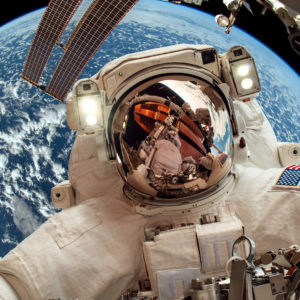Four astronauts recently embarked on a six-month journey to the International Space Station. Their mission comes months after the start of NASA’s ambitious Artemis program, which has already sent a spacecraft to the moon and back and plans to send the first woman and the first person of color to the lunar surface in 2024. These latest space missions are part of a broad expansion of the space economy that represents a new space exploration age that will reshape life on Earth.
This new era of exploration is brimming with potential for the broader lessons gleaned from living in an environment as extreme as space. Spending time in space forces us to innovate and pivot quickly when something goes awry. This applies to many global issues and personal challenges, from environmental sustainability to getting a good night’s sleep in a busy environment.
This is, partly, because space travel is becoming more common, comfortable and convenient. After two years of carrying astronauts for NASA, SpaceX launched its first private charter to the ISS last April. Blue Origin has already sent more than 30 people into space, including celebrities Michael Strahan and William Shatner. Virgin Galactic has more than 700 people signed up for suborbital trips later this year. As space travel becomes more common, the technologies that astronauts use to eat, sleep, work and function will follow suit.
To flourish off Earth, humans must rely on an array of new technologies, many of which are just beginning to emerge. Neurotech — the sensing or stimulation of the nervous system (invasively or not) for physical, mental and emotional wellness — appears promising. Sleep wearables tackle the neurological roots of sleep problems by showing the brain how to fall asleep and stay asleep all night. This technology could support astronauts as they experience 16 sunrises and sunsets daily in orbit, guaranteeing proper rest and focus.
To prevent muscle atrophy and blood flow problems in microgravity, astronauts must exercise two hours daily. Additionally, training to live and work in orbit can be challenging while they build muscle memory. To help with these issues, astronauts could use new technology that provides electro-stimulation of the primary motor cortex, effectively helping them learn movement faster.
Health and wellness is just one sector where public-private partnerships advance science and technology that will shape our lives on and off Earth. The food industry shows similar promise as how we grow food in space has vast implications for developing sustainable food systems in challenging climates and environments on Earth.
NASA recently held a Deep Space Food Challenge to evaluate ideas for novel food production technologies and systems that require minimal resources and produce minimal waste while providing safe, nutritious and tasty food for long-duration human exploration missions.
The industrial design firm I co-founded was among the organizations that took up the challenge and submitted a design for a space culinary lab. Our lab is designed to mimic the terrestrial kitchen experience, offering a laser grill, algae bioreactor, aeroponic garden, and beverage homogenizer. The lab’s small footprint and simple design allow for maximum flexibility, allowing astronauts to make a vast variety of meals — just like in their kitchen at home.
Other winning teams have taken a more singular, focused approach. A team of biomedical engineers from Tufts University is developing a way to transform insect cells into “meat” as a source of stable, protein-rich food matter that can be produced in space. A doctoral student at the University of Florida is enabling astronauts to bake fresh bread in space.
For those of us staying firmly on Earth, these innovations offer a variety of foods and fresh nourishments that food deserts lack. Empowering people to easily grow their own nutritious foods and lessen dependencies on the monetary and planetary costs of fuel and supply chain logistics has proved increasingly volatile and chaotic.
This next ISS crew will conduct more than 200 experiments across various subject areas. Their discoveries will play an essential role in expanding our frontiers while driving technological transformations on Earth. And as we learn more about survival in the harshest and most desolate environment imaginable — space — we will also expand our understanding of what it means to be human.
Please follow DVJournal on social media: Twitter@DVJournal or Facebook.com/DelawareValleyJournal


